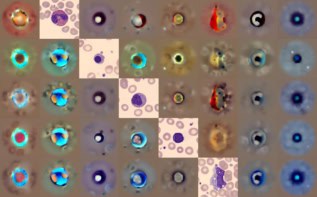
Stimulation of the vagus nerve by implanted electrodes is used to treat a range of conditions including epilepsy, depression and heart failure. Such stimulation can also inadvertently activate muscles in the throat, however, leading to treatment-limiting side effects such as pain, difficulty swallowing and shortness of breath. By measuring nerve and muscle activity in pigs undergoing vagus nerve stimulation (VNS), researchers in the US have identified the mechanism by which the technique causes these side effects. This new understanding should help clinicians administer VNS at a high enough intensity to achieve therapeutic benefits while keeping below the threshold at which intolerable side effects are triggered.
Despite the effectiveness of VNS at treating some conditions, many details of the process remain unclear. One of the open questions has to do with the technique’s side effects, which recent studies have shown are more severe than researchers would expect. This can be a problem when those side effects become intolerable at a stimulation level below that at which the technique starts to yield benefits.
The persistence of the mystery around the side effects of VNS can be attributed partly to the relative paucity of human data obtained in the two decades since the technique was first demonstrated.

“Many of the studies that were used to support the application of VNS in humans were performed in animal models that do not represent human physiology very well,” says Evan Nicolai, a graduate student at the University of Wisconsin-Madison and the Mayo Clinic.
Writing in the Journal of Neural Engineering, Nicolai and collaborators report how they sought to fill this gap with a series of experiments on pigs, which represent a much more human-like animal model.
The team wrapped either the right or left vagus nerve of 12 anaesthetized animals with a helical electrode cuff of the type used to administer VNS clinically. They also implanted electrodes to obtain electroneurograms (ENGs) from the vagus nerve and electromyograms (EMGs) from the cricoarytenoid and cricothyroid muscles. These muscles, which govern the motion of the larynx, are controlled by impulses from two bundles of nerve fibres that branch off from the vagus trunk: the recurrent laryngeal branch (RLB) activates the cricoarytenoid muscle; the superior laryngeal branch (SLB) activates both the cricothyroid and cricoarytenoid muscles.
Nicolai and his colleagues applied a stimulation pulse via the electrode cuff, and measured the timing of the resulting ENG and EMG signals recorded in the vagus nerve and the cricoarytenoid and cricothyroid muscles. Any delay between the pulse and a muscle’s response would indicate that the muscle was activated by a signal following a circuitous route, passing first along the vagus trunk, and then into the motor nerve fibres that branch off. A prompt response, on the other hand, would indicate that the muscle was activated directly by leakage current taking a shortcut from the nearby electrode cuff.
The researchers found that low levels of stimulation (around 0.3 mA) activated the cricoarytenoid muscle with a relatively long latency of 6–10 ms. Pulses of this intensity are well below the tolerable threshold for humans, indicating that signals induced in the RLB are not the cause of the treatment-limiting side effects. Higher stimulation levels (around 1.4 mA) provoked a response in the cricothyroid muscle with a latency of between 4 and 6 ms. This pulse strength corresponds approximately to the tolerable limit for clinical VNS. The researchers conclude, therefore, that the most severe side effects can be attributed to stimulation pulses that are strong enough to activate the nearby SLB directly via leakage currents from the electrode cuff.
The effect of this leakage-induced activation of the SLB could be minimized by using cuff designs with thicker insulation, or by rerouting the nearby nerve branches during surgery. But the team also has plans for avoiding muscle activation via the fibres that take the long way from the stimulation electrode to the RLB.
“One member of our team, Megan Settell, is leading a project to understand the distribution and orientation of the nerve fibres that make up the vagus, to enable targeting of different fibres before a patient has surgery for VNS,” says Nicolai. “In parallel, our collaborators Warren Grill and Nicole Pelot seek to predict activation of certain nerve fibres in the vagus using computational modelling.”



